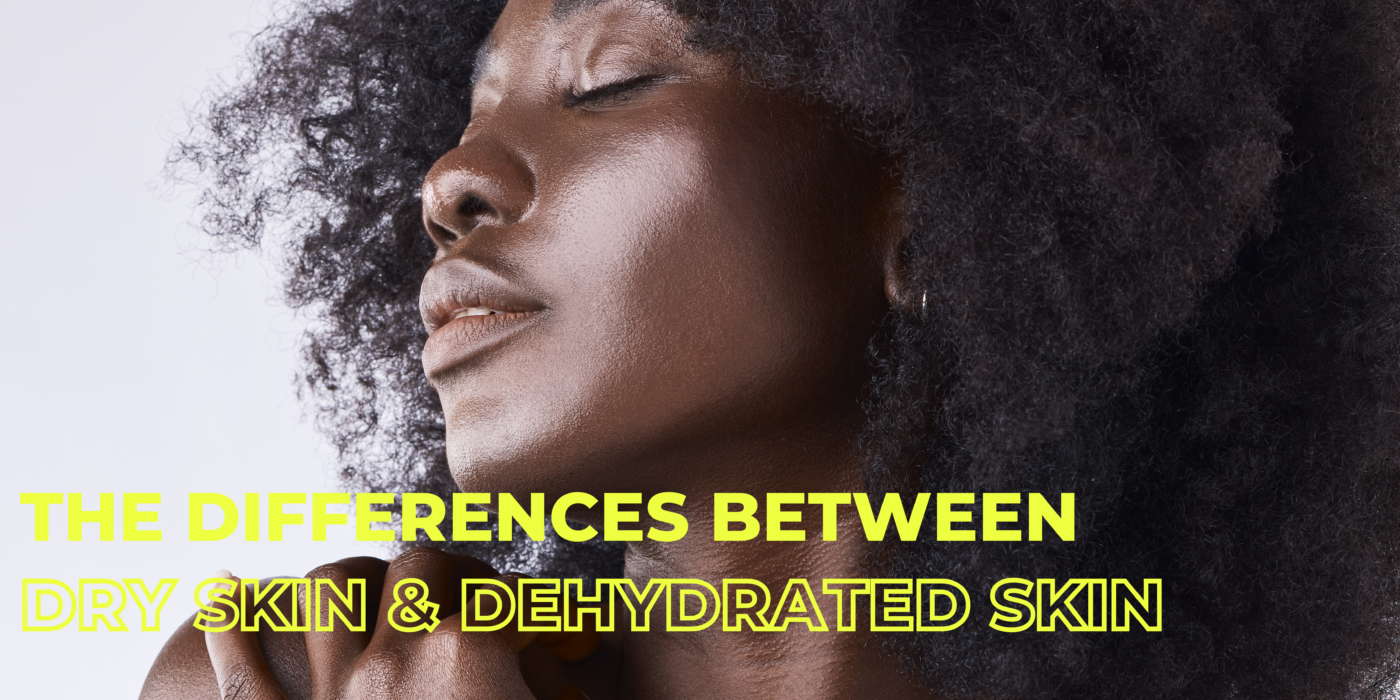Dehydrated skin is commonly confused with dry skin with the two terms being used interchangeably in many cases. Dry skin is a skin type, rather than a condition, characterized by reduction in sebum production from the oil producing glands in the skin. Whereas dehydrated skin basically lacks water content, but can ultimately lead to over production of sebum as the skin tries to compensate for lack of moisture.
PS: All skin types are prone to dehydration.
Dehydrated skin looks dull, shows premature signs of aging such as surface wrinkles and loss of elasticity. Dry skin has a scaly and flakey appearance, with redness or irritation.
How to Test if Your Skin is Dehydrated
A simple pinch test is the most common way to determine your hydration levels. Follow these simple steps to find out, so we can get working on your dehydration immediately:
- Take a small portion of your skin around the cheek area and squeeze lightly
- If you notice wrinkling or if the skin doesn’t bounce back after you let go, your skin is probably dehydrated.
You can also speak to our certified skincare aesthetician, Joyce Waiharo who can help you figure out if your skin is dehydrated or dry and what steps/skincare routine would be best for your skin. Book your session with Joyce here.
How to Care for Dehydrated Skin or Dry Skin
A big part for optimum skin health is having both hydrated and moisturised skin, it’s the ultimate goal, and here’s how you can get to it:
- Create the Optimum Skincare Routine
If you have dry skin, your goal should be increasing the amount of moisture in your skin. Opt for ingredients that increase moisture content in the skin barrier such as Ectoin found in our Derma Ecto-Cica 12 serum, Derma Ecto-Cica 11 Toner and Derma Ecto-Cica 23 Emulsion. Dehydrated skin on the other hand, can be controlled more easily. Increase your hydration levels, eat fruits and vegetables with high water content and use ingredients in your skincare routine which elevate hydration levels such as Hyaluronic acid, Aloe vera or even Vitamin C to plump up your skin. Need a dose of hydration in an instant? Explore our Uncover Skincare Aloe vera and Vitamin C sheet masks here.
If you want to increase both your hydration levels and skin moisture content, we would suggest using both hydrating and moisturising ingredients in your skincare routine. Layer the water-based serums before the heavier moisturising ingredients. Here’s an example, the Derma Ecto-Cica 12 serum, a water-based product, would be used before the thicker cream based Derma Ecto-Cica 23 Emulsion because of the consistency, ie, moisturisers/creams are thicker than serums.
Basically, you should start with light-weight products then build up to heavier, cream or oil based products. In the AM, always follow up with SPF, read more below.
- Protect your Skin
Sunscreen is extremely important in protecting skin from further dehydration and the effect of harmful rays on dry skin (or any skin type as a matter of fact). Sunscreen should always be the last step in your routine and should have an SPF of at least 30+.
- Diet and Lifestyle Changes
You are what you eat, and if you deprive yourself of water but pack on the caffeine based drinks or alcohol, the effects begin to show up on the skin. So, drink more water or atleast take a few sips every 20 minutes and eat more vegetables and fruits.
Get plenty of rest and exercise regularly so you can produce some endorphins 😉 .
Do you often have dehydrated or dry skin? What are some tips you have that may have helped you? Let us know in the comments below.

